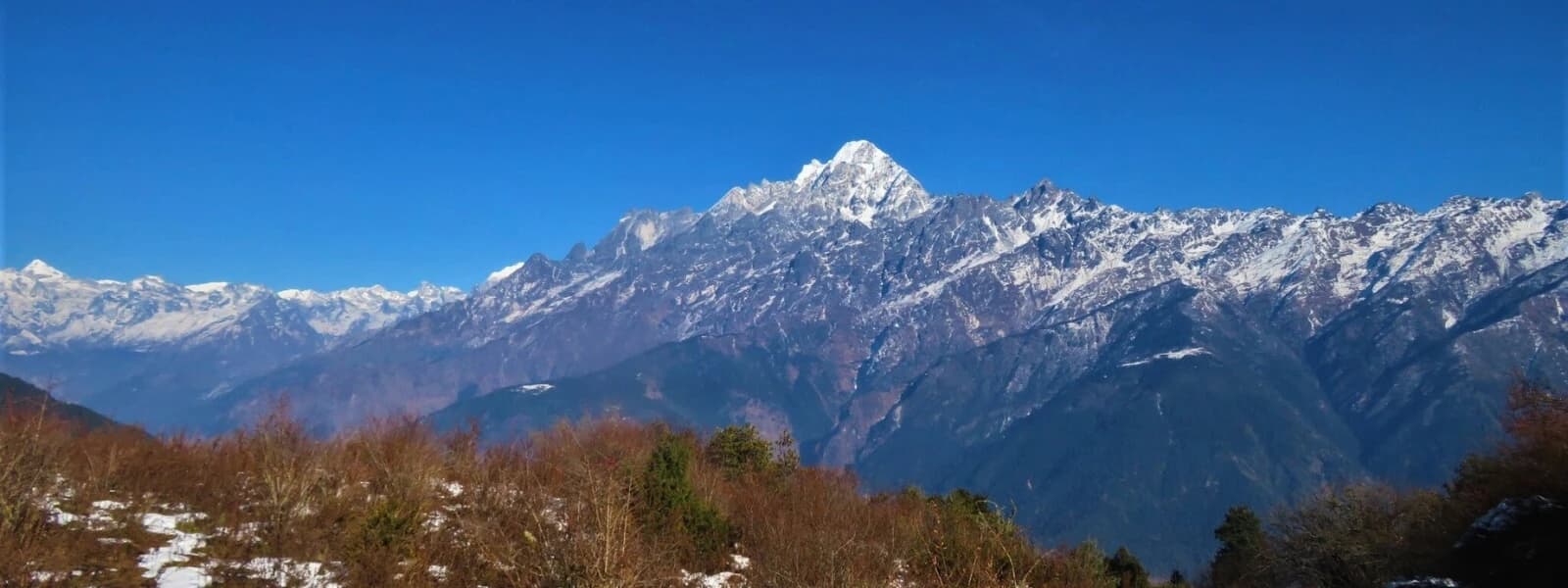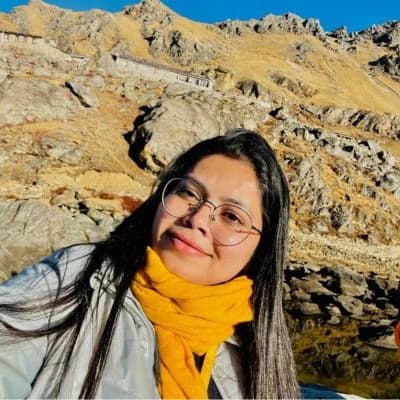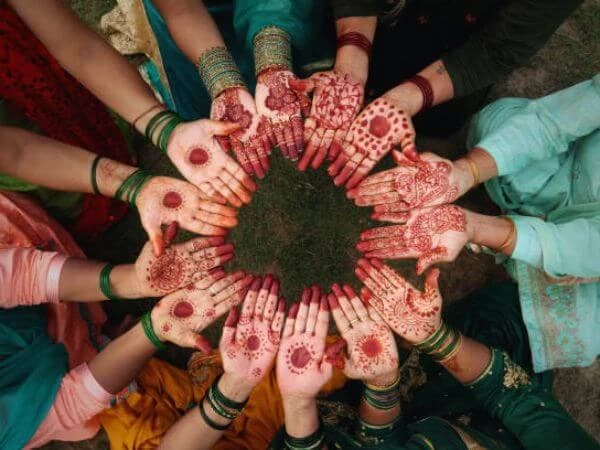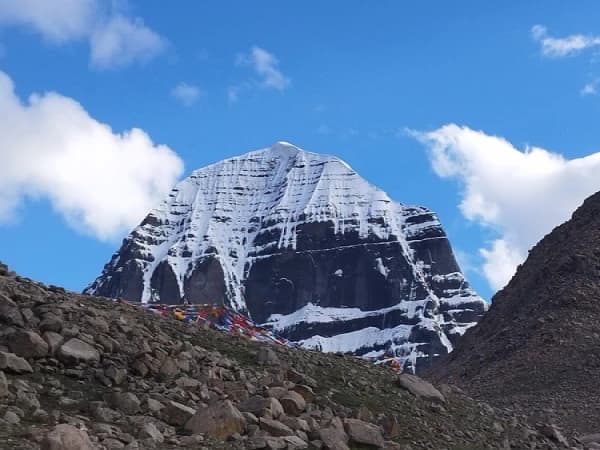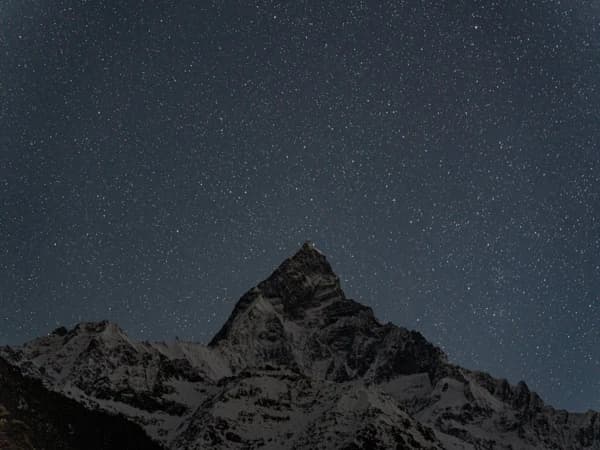"Travelers seeking adventure and cultural immersion will find Nepal to be the ideal location because of its breathtaking natural beauty and rich cultural legacy. Nepal has something for everyone with its soaring Himalayan peaks, undulating green hills, and thriving cities. We will serve as your tour guide through the best of Nepal in this part, giving you all the details you require to enjoy your trip to the fullest. You'll find all the information you need to make your trip to Nepal truly unforgettable, from the best places to visit to the local experiences you simply must have."
"Nepal Tour - A Guide to the Land of Himalayas, Temples and Treks"
Introduction
A. Overview of Nepal as a tourist destination
In South Asia, Nepal is a landlocked nation bordered by China and India. It is a well-liked tourist destination because of its breathtaking natural beauty, unique culture, and rich history.
The breathtaking alpine beauty in Nepal, which includes Mount Everest, the highest mountain peak in the world, is one of the country's key draws. Visitors frequently engage in mountaineering and trekking, and the nation offers a variety of trekking routes, from straightforward climbs to difficult adventures.
Nepal is known for its mountains, as well as for its diverse Hindu and Buddhist cultural legacy. Visitors can discover the country's distinctive religious practices while touring historical temples and palaces, including Kathmandu Durbar Square, a UNESCO World Heritage Site.

In addition, Nepal is recognized for the variety of its wildlife, which includes tigers, rhinos, and elephants. For the chance to see some of these remarkable species in their native habitat, wildlife fans can travel to the nation's national parks, such as Chitwan National Park and Bardia National Park.
Adventure sports are another feature of Nepal that draw tourists. The nation is a favorite among thrill-seekers due to the variety of activities it provides, including rafting, paragliding, and bungee jumping.
As a result, Nepal is a singular and intriguing travel destination that provides a blend of scenic beauty, historical significance, and adventure. Nepal is undoubtedly worth a trip, whether you're a trekker, a wildlife enthusiast, or just looking for a taste of adventure.
B. Importance of planning for a successful Nepal tour

An effective Nepali tour requires careful planning. A well-planned trip will help you make the most of your time in the country and have a pleasurable and unforgettable experience thanks to the wide number of sights and opportunities available there.
The time of year you wish to travel to Nepal is one of the first things to think about while making travel plans. During the monsoon season, which lasts from June to September, the country sees heavy rains in various regions. It is preferable to schedule your trip for the dry season, which runs from October to May, when the weather is more suitable for outdoor activities like hiking.
The type of tour you want to take should then be considered. Having a clear notion of what you want to do and see is crucial, whether you are interested in trekking, adventure sports, or cultural sightseeing. This will assist you in selecting the best route and guarantee that your vacation is customized to your interests and skills.
Budget considerations should be made when organizing your tour. Although Nepal is a reasonably priced travel destination, expenses can add up quickly, especially if you go on a trek or participate in other pricey activities. Make sure to budget appropriately after doing some advance research on the price of your tour.
Choosing the correct tour operator is a crucial component of tour planning. A reputable tour operator can assist you with itinerary planning, transportation arrangements, and other travel-related needs so you can make the most of your vacation. Find a tour company that is dedicated to responsible tourism, has a solid reputation, and has experience operating in the area.
In conclusion, proper planning is essential for a successful tour of Nepal. By considering the time of year, type of tour, budget, and tour operator, you can ensure that your trip is well-planned and tailored to your interests and needs, giving you the best possible experience of this amazing country.
Planning Your Tour
A. Best time to visit Nepal
Nepal is a stunning nation with a variety of year-round sights and activities. The ideal time to visit, however, will depend on your interests and travel preferences. When planning your vacation to Nepal, keep the following considerations in mind.
Between October and May is the ideal season to travel to Nepal for trekking. The weather is dry and clear at this time of year, making hiking and climbing excellent. During this time, the Himalayan views are also at their finest.
The ideal travel window for wildlife lovers is from October to March. As a result of the dry and clear weather during this time, it is simpler to see animals in national parks.Additionally, the vegetation is low, making it easier to spot wildlife from a distance.
Any time of year is excellent if you're interested in sightseeing and city exploration. It is important to keep in mind that the monsoon season, which lasts from June to September, might make travel more challenging and damage some of the historic monuments.
The ideal time to visit if you're into adventure sports is from October to May. The dry, clear weather at this time is perfect for outdoor pursuits like rafting, paragliding, and bungee jumping.
The best time to visit Nepal will depend on your interests and travel preferences, in other words. There is a season that is suitable for your trip, whether you're a trekker, animal enthusiast, cultural adventurer, or thrill-seeker. It's always a good idea to research the best time to visit for your specific interests and to plan your trip accordingly.
B. Travel budget and cost considerations
Depending on your spending limit and travel preferences, visiting Nepal might be cheap or expensive. Here are a few important things to think about while setting your vacation budget for Nepal.
Accommodation: The price of lodging in Nepal varies greatly based on the type of room, the area, and the season. Budget lodgings like guesthouses and hostels can run you $5 to $10 per night, while more upscale lodgings might run you $50 to $100 or more.
Food: Meals at neighborhood restaurants cost between $2 to $5 in Nepal, making eating out reasonably affordable. However, the costs can pile up if you intend to eat at more upmarket establishments or buy Western-style meals.
Transportation: The cost of transportation in Nepal varies depending on the mode of transport and distance traveled. Domestic flights can be expensive, but are often necessary for reaching remote areas. Buses and taxis are much cheaper options, but can be more time-consuming.
Activities: The cost of activities and attractions in Nepal can also add up quickly, especially if you plan to go trekking or participate in adventure sports. It's a good idea to research the costs of your preferred activities ahead of time and budget accordingly.
Visas: Visitors to Nepal need a visa, which can be obtained on arrival at the airport or in advance at a Nepalese embassy. The cost of a visa is $50 for a 15-day visa, $125 for a 30-day visa, and $200 for a 90-day visa.
In conclusion, the price of a trip to Nepal can differ significantly based on your spending limit and travel preferences. It's a good idea to budget appropriately and do some advance research on the costs of your favourite activities and lodging choices. You may enjoy a budget-friendly and unforgettable trip in this magnificent nation with careful planning and a little flexibility.
C. Essential travel documents and vaccinations
Traveling to a new destination can be both exciting and stressful. To ensure a smooth and enjoyable trip, it is important to be well prepared with all the necessary travel documents and vaccinations. Here is a list of the most essential travel documents and vaccinations you should have before your trip:
Travel Documents:
- Passport: This is the most important document you will need to travel internationally. Make sure your passport is up to date and has a validity of at least six months from your travel dates.
- Visa: Depending on your destination, you may need to obtain a visa before you travel. Research the visa requirements of your destination and apply for a visa well in advance of your trip.
- Travel Insurance: Travel insurance is highly recommended when traveling abroad. It provides coverage for medical expenses, trip cancellations, and other unexpected emergencies.
- Itinerary: Have a printed copy of your travel itinerary and keep it with you at all times. This should include flight information, hotel reservations, and any other important details.
Vaccinations:
- Routine Vaccinations: Ensure that you are up to date with routine vaccinations, such as the measles-mumps-rubella (MMR) vaccine and the diphtheria-tetanus-pertussis (DTP) vaccine.
- Destination-Specific Vaccinations: Depending on your destination, you may need additional vaccinations to protect against diseases such as yellow fever, typhoid, or hepatitis A. Research the vaccine requirements for your destination and schedule an appointment with a healthcare provider at least 6-8 weeks before your trip.
In conclusion, having all the necessary travel documents and vaccinations before your trip is crucial for a safe and stress-free experience. Make sure to do your research and be well prepared to ensure that your travels are enjoyable and memorable.
D. Accommodation options and recommendations
Your vacation experience's accommodations play a significant role, and there are numerous options to choose from to meet a variety of interests and budgets. Here are some well-liked lodging choices and suggestions to take into account:
- Hotels: Hotels are a traditional form of lodging and include numerous services like a front desk open around the clock, on-site dining options, and room service. Pick a hotel based on your preferences for location and price range.
- Hostels: Offering both private rooms and communal dormitory-style accommodations, hostels are an affordable choice for tourists. Additionally, hostels provide common areas where guests can mingle and meet new people.
- Vacation rentals: For those who prefer more solitude and space, vacation rentals, such as apartments and homes, are a terrific choice. As you get to stay in a residential area and prepare your own meals, they also provide a more genuine taste of the local culture.
- Homestays: Homestays provide visitors the chance to stay with a local host and get a firsthand look at the community's culture. A private room in a host's house or a separate cottage or apartment on the host's land are both examples of homestays.
- Luxury Accommodation: If you're searching for an opulent experience, think about booking a room at a boutique resort or a five-star hotel. These kinds of lodgings frequently provide upscale amenities like spas, private pools, and fine dining establishments.

When choosing your accommodation, it's important to consider factors such as location, budget, and amenities. Researching online, reading reviews, and checking prices can help you make an informed decision. Whether you prefer the convenience of a hotel, the budget-friendly option of a hostel, or the comfort of a vacation rental, there's an accommodation option to suit your needs and budget.
Must-See Destinations in Nepal

A. Kathmandu, the cultural capital
Nepal's capital city, Kathmandu, is a busy city with a rich cultural legacy. Kathmandu, also referred to as the "cultural capital" of Nepal, is home to a large number of temples, palaces, and other monuments that highlight the city's strong history and varied cultural influences. For anyone interested in Hinduism, a visit to the well-known Pashupatinath Temple, a UNESCO World Heritage site, is a must. Another well-liked destination with magnificent city views is the Swayambhunath Stupa, popularly referred to as the Monkey Temple. Along with having a rich cultural legacy, Kathmandu is a wonderful destination to shop and sample local cuisine.
B. Pokhara, the adventure hub
Pokhara, a city in western Nepal, is known as the nation's "adventure hub." Many hiking treks in the Annapurna region begin in this city, which is also a well-liked spot for rafting, paragliding, and kayaking. Beautiful mountain landscape surrounds Pokhara, and the tranquil Phewa Lake is a must-see for its breathtaking vistas. Pokhara provides a variety of cultural and historical attractions in addition to its outdoor activities, including as the International Mountain Museum and the well-known Buddhist temple, the World Peace Stupa.
C.Area of the Himalayas: Annapurna, Everest, and Langtang
Some of the most well-known mountain ranges in the world, such as Annapurna, Everest, and Langtang, may be found in Nepal's Himalayan area. A variety of trekking alternatives are available in the Annapurna region, ranging from the strenuous Annapurna Circuit to the easier Annapurna Sanctuary trip. On the other side, the Everest region is well known for its difficult trip to Mount Everest's base camp, the highest point on Earth. Another well-liked trekking location is Langtang National Park, which offers breathtaking mountain scenery and the opportunity to observe rare animals like red pandas and Himalayan black bears. The Himalayan region offers a variety of possibilities to appreciate the magnificence of the Nepalese mountains, regardless of your level of experience in trekking.
D. Chitwan National Park, for a glimpse of wildlife
Chitwan National Park is one of the most well-liked tourist destinations in Nepal and is well-known for having a wide variety of animals. A UNESCO World Heritage site, the park is located in the south of the country and is home to a wide variety of creatures, such as Asian elephants, one-horned rhinoceroses, and Bengal tigers.
Visitors to Chitwan National Park can go on a jungle safari to see the animals in their natural habitat and learn about the park's conservation efforts. Elephant safaris, canoe trips, and forest hikes are popular excursions. To understand more about the culture and way of life of the indigenous Tharu people, tourists can also stop by one of the villages nearby.
A popular destination for bird watchers is Chitwan National Park because of the variety of bird species and other diverse wildlife that it is home to. Chitwan National Park's breathtaking scenery and diverse flora provide visitors to Nepal with a unique and unforgettable experience.
Whether you're an animal lover, a wildlife enthusiast, or just looking for a unique and interesting experience, Chitwan National Park should be on your travel itinerary when visiting Nepal. Prepare yourself for an extraordinary journey in the middle of the jungle by including this incredible wildlife park in your travel plans.
Local Experiences to Try
A. Trekking and hiking in the Himalayas
The Himalayas, one of the most famous mountain ranges in the world, is a must-visit destination for trekkers and hikers. Every level of experience can find a suitable trekking choice, from the challenging Annapurna Circuit to the simpler Langtang tour. Trekking in the Himalayas offers stunning mountain scenery, chances to meet with native people, and the ability to push your physical limits.
B. Culture immersion through local festivals and markets
Because Nepal is a country with a rich cultural past, there are numerous opportunities to personally experience it. Participating in local events such as festivals and markets is one of the best ways to accomplish this. The famed Dashain and Tihar festivals, for example, are a time for jubilant celebration and provide an interesting glimpse into Nepali culture. Native marketplaces, such as Kathmandu's renowned Ason Market, allow visitors to watch and purchase local commodities such as hand-woven fabrics, spices, and traditional crafts.
C. Adventure activities like bungee jumping and paragliding
Nepal is known for its adventure opportunities, and there is no shortage of thrilling activities to try. Bungee jumping, for example, is available at various locations in the country, including Pokhara, where visitors can take a leap from the popular Bhote Koshi Bridge. Paragliding, another popular activity, offers stunning aerial views of the mountains and surrounding scenery. Whether you're an adrenaline junkie or simply looking for a unique and memorable experience, adventure activities in Nepal are not to be missed.
D. Spiritual journey through ancient temples and monasteries

There are numerous historic temples and monasteries in Nepal that allow tourists to get a sense of the country's spiritual side. Nepal has a rich cultural and spiritual legacy. From Kathmandu's renowned Swayambhunath Temple to the famous Tengboche Monastery in the Everest region, these sacred locations offer a serene and enlightening ambiance in addition to being historically significant.
The Swayambhunath Temple, popularly known as the Monkey Temple and located in the centre of Kathmandu, is one of Nepal's most famous temples. This historic temple is regarded one of the holiest Buddhist places in the world and is a must-see for city tourists. Visitors may ascend the steep stairs to the temple and marvel at the breathtaking views of the city as well as the beautiful carvings and paintings that cover the temple walls.
Another significant spiritual location in Nepal is Tengboche Monastery, which is located near Mount Everest. A opportunity to enjoy the quiet and tranquility of the mountains is provided by this secluded and breathtaking monastery that is situated in the heart of the Himalayas. In addition to taking in the breathtaking views of the surrounding peaks, visitors can engage in traditional prayers and ceremonies.
The Pashupatinath Temple in Kathmandu should not be missed by anyone with a Hindu interest. A hub of pilgrimage for followers from all over the world, this ancient temple is one of the holiest places in the Hindu religion. In addition to admiring the spectacular architecture of the temple and the buildings around it, visitors may observe traditional Hindu festivals and rituals.
Finally, a spiritual tour through Nepal's old temples and monasteries is a unique experience. Whether you're a religious pilgrim, a history buff, or simply searching for something new and different, these holy places in Nepal are a must-see. So include them in your itinerary and prepare for a voyage that will both challenge and inspire you.
Conclusion
A. Recap of the best of Nepal tour experience
Amazing natural beauty, a rich cultural history, and hospitable people may all be found in Nepal. A trip of Nepal is the perfect choice if you're seeking for an adventure that will transform your life. You'll get the chance to take in the finest that this amazing country has to offer throughout your tour.
There is something for everyone in Nepal, from mountain hiking across the breathtaking Himalayas to discovering the energetic streets of Kathmandu. You'll like hiking to Mount Everest's base or rafting over the Bhote Kosi River's rapids if you're an adventure seeker. And if you're more interested in learning about the local culture, you'll like seeing Kathmandu's temples and discovering the unique customs of the Nepalese people.
One of the highlights of a Nepal tour is getting up close and personal with the amazing wildlife that lives in the country. From rare species of birds to majestic elephants, there are plenty of opportunities to spot incredible creatures on your journey.
B. Final tips and recommendations for travelers
If you're planning a tour of Nepal, here are some tips and recommendations to make your experience even more enjoyable:
- Nepal enjoys a variety of temperatures and weather patterns, so make sure to pack appropriately. You will need warm clothing and waterproof gear if you plan to go hiking in the mountains.
- Respect for local traditions and customs is crucial because Nepal is a country with a diverse culture. This entails dressing modestly in rural regions, taking off your shoes while entering temples, and refraining from public shows of affection.
- Employing a guide will substantially improve your experience because Nepal is a vast and diverse nation. In addition to assisting you in navigating the occasionally difficult terrain, a guide can offer insightful information on the history and culture of the locations you visit.
- Drink plenty of water: It's crucial to drink plenty of water while hiking in the mountains. Drink plenty of water, and if you're going on a longer hike, bring additional water and electrolyte tablets.
C. Encouragement to book a Nepal tour for a life-changing adventure.
A trip to Nepal is a once-in-a-lifetime opportunity because the country is truly unique. You'll find something to enjoy in Nepal whether you're an adventurer, a nature lover, or a culture aficionado.
A Nepal vacation will provide you with lifelong memories, from the Himalayas' spectacular natural splendor to Kathmandu's rich cultural legacy. So why are you still waiting? To begin your journey toward a life-altering trip, reserve your tour of Nepal right away!


